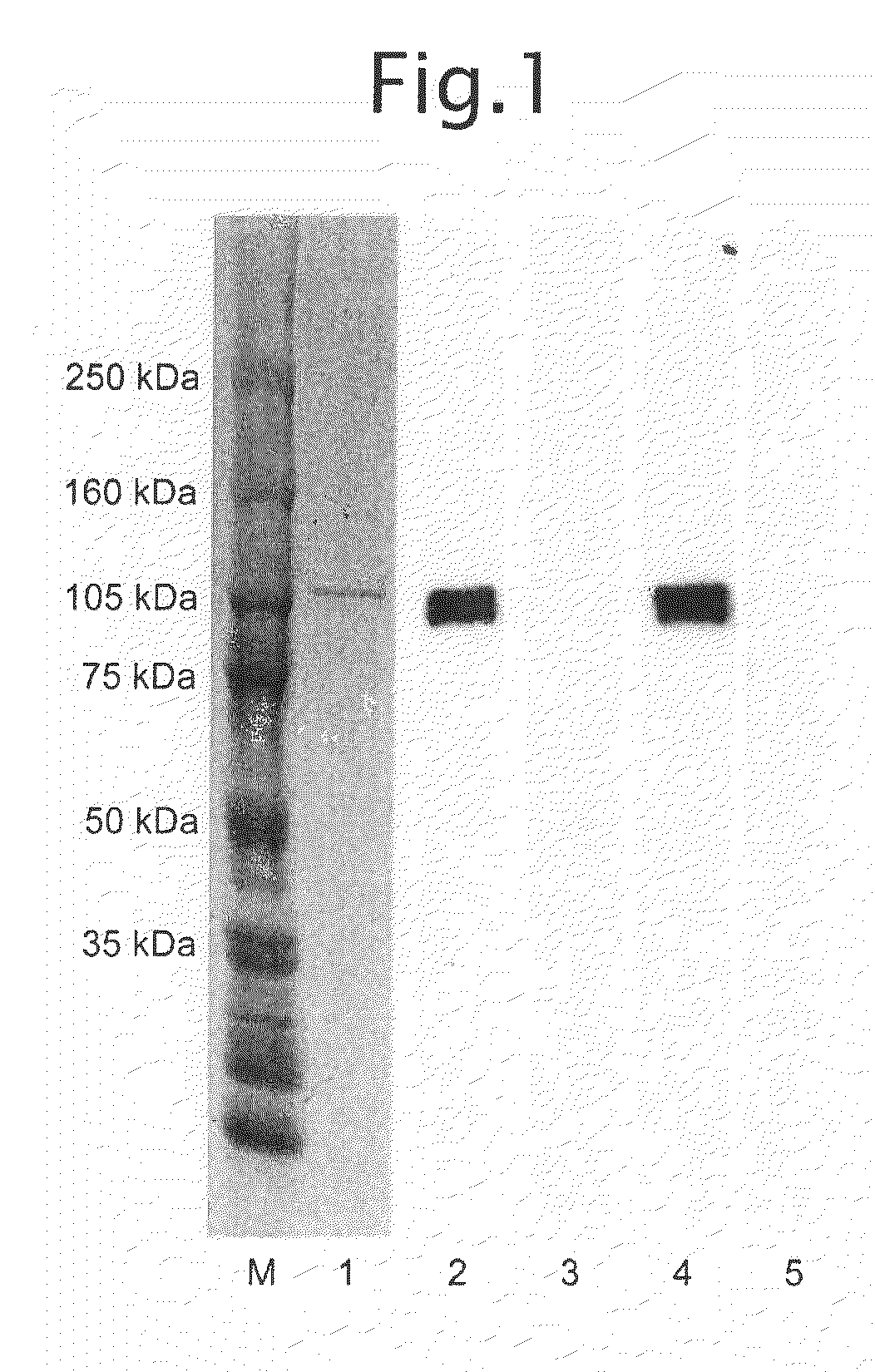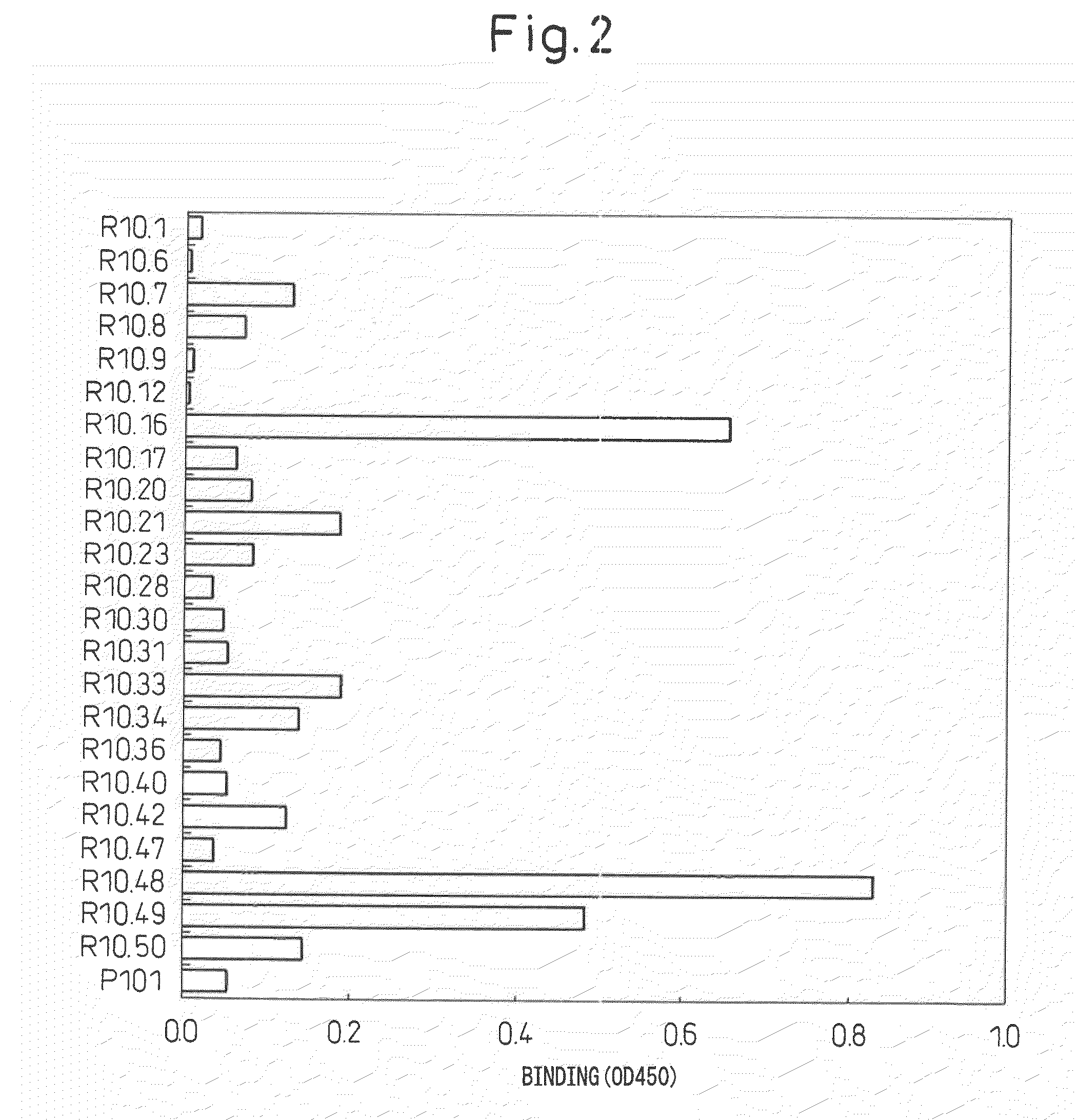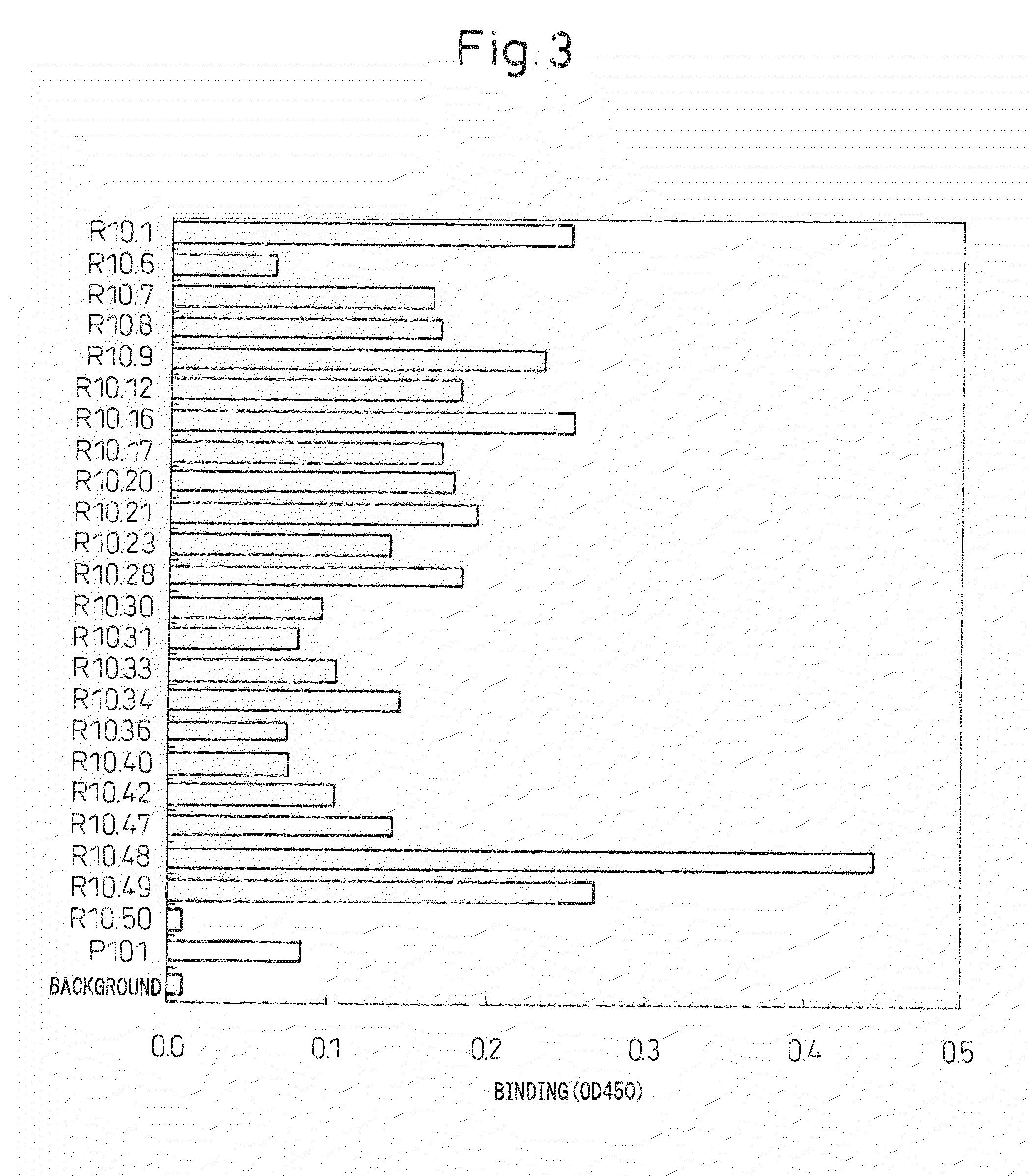Antibody specific to intact human autotaxin, method of screening the same and method and reagent for examining malignant lymphoma by assaying autotaxin
an autotaxin and autotaxin technology, applied in the field of antibodies, can solve the problems of incomplete analysis of autotaxin detail, and achieve the effect of enabling quantification of human autotaxin in a short period of tim
- Summary
- Abstract
- Description
- Claims
- Application Information
AI Technical Summary
Benefits of technology
Problems solved by technology
Method used
Image
Examples
example 1
Expression of Recombinant Human Autotaxin
[0058]Nucleotide numbers 1 to 2589 (SEQ ID NO: 1) of Autotaxin-t (GenBank accession number L46720) were cloned from a human liver cDNA library using RT-PCR in accordance with ordinary methods. This cDNA was inserted into a baculovirus transfer vector pFASTBac-1 (Invitrogen), and a baculovirus for expressing full-length human autotaxin was prepared using the Bac-to-Bac System (Invitrogen) in accordance with the protocol. The stop codon (TAA nucleotide sequence 2590 to 2592) was removed from the cloned full-length human autotaxin cDNA followed by the addition of 6 histidine residues to prepare a baculovirus for expressing polyhistidine-tagged human autotaxin having polyhistidine in accordance with the protocol. Culture supernatants containing expressed full-length human autotaxin and polyhistidine-tagged human autotaxin were able to be prepared by infecting into sf9 or sf21 and the like in accordance with ordinary methods using these baculoviru...
example 2
Purification of Polyhistidine-Tagged Human Autotaxin
[0059]One liter of cells of insect cell line sf21 (5×105 cells / mL) were infected with baculovirus for expressing polyhistidine-tagged human autotaxin followed by culturing for 4 days at 28° C. Following completion of culturing, the cells were separated by centrifugal separation (10 minutes at 3000 rpm) followed by removal of cell fragments and other precipitates with a 0.45 μm filter. The recovered culture supernatant was dialyzed with TBS (Tris-buffered saline: 10 mM Tris-HCl, 150 mM NaCl, pH 7.4) and then purified using a metal chelating column packed with BD-TALON Metal Affinity Resin (BD Biosciences, Cat. No. 63501) in accordance with the manual provided. More specifically, the column was packed with 5 mL of resin by volume. 50 mL of a 50 mM CoCl2 solution were added to the column to bind the cobalt. After washing the column with an aqueous solution containing 300 mM NaCl, the column was equilibrated with a pH 7.7 aqueous solut...
example 3
Monoclonal Antibody Production
[0060]Seven-week-old female Wistar-Lewis rats were immunized with 250 μg of antigen together with Freund's complete adjuvant into a hind limb under ether anesthesia. One month later, the inguinal lymph nodes and iliac lymph nodes were excised from the rats followed by recovery of B cells. Cell fusion was carried out in accordance with conventional methods with mouse myeloma cell line PAI in the presence of polyethylene glycol, selection was carried out for about 10 days using HAT medium, and target antibodies were selected by screening for antibody-producing hybridomas in accordance with Example 4. Cells in those wells that screened positive were established as hybridomas by monocloning using the limiting dilution method. At that time, after culturing for about 10 days using HT medium, culturing was finally continued with hybridoma medium and the supernatant was recovered to recover the antibody. Medium containing 27.5 mL of NCTC-109 medium (Invitrogen)...
PUM
| Property | Measurement | Unit |
|---|---|---|
| molecular weight | aaaaa | aaaaa |
| concentrations | aaaaa | aaaaa |
| concentrations | aaaaa | aaaaa |
Abstract
Description
Claims
Application Information
 Login to View More
Login to View More - R&D
- Intellectual Property
- Life Sciences
- Materials
- Tech Scout
- Unparalleled Data Quality
- Higher Quality Content
- 60% Fewer Hallucinations
Browse by: Latest US Patents, China's latest patents, Technical Efficacy Thesaurus, Application Domain, Technology Topic, Popular Technical Reports.
© 2025 PatSnap. All rights reserved.Legal|Privacy policy|Modern Slavery Act Transparency Statement|Sitemap|About US| Contact US: help@patsnap.com



